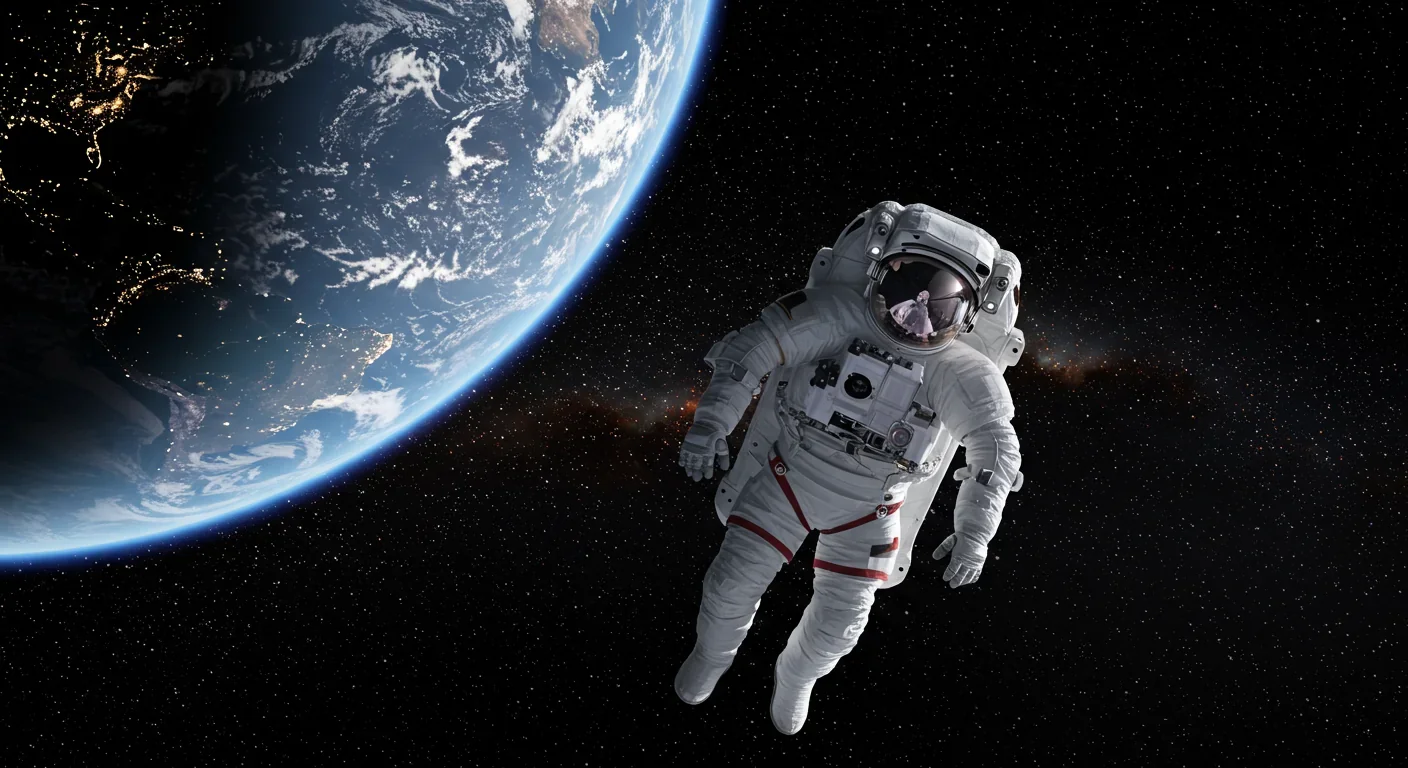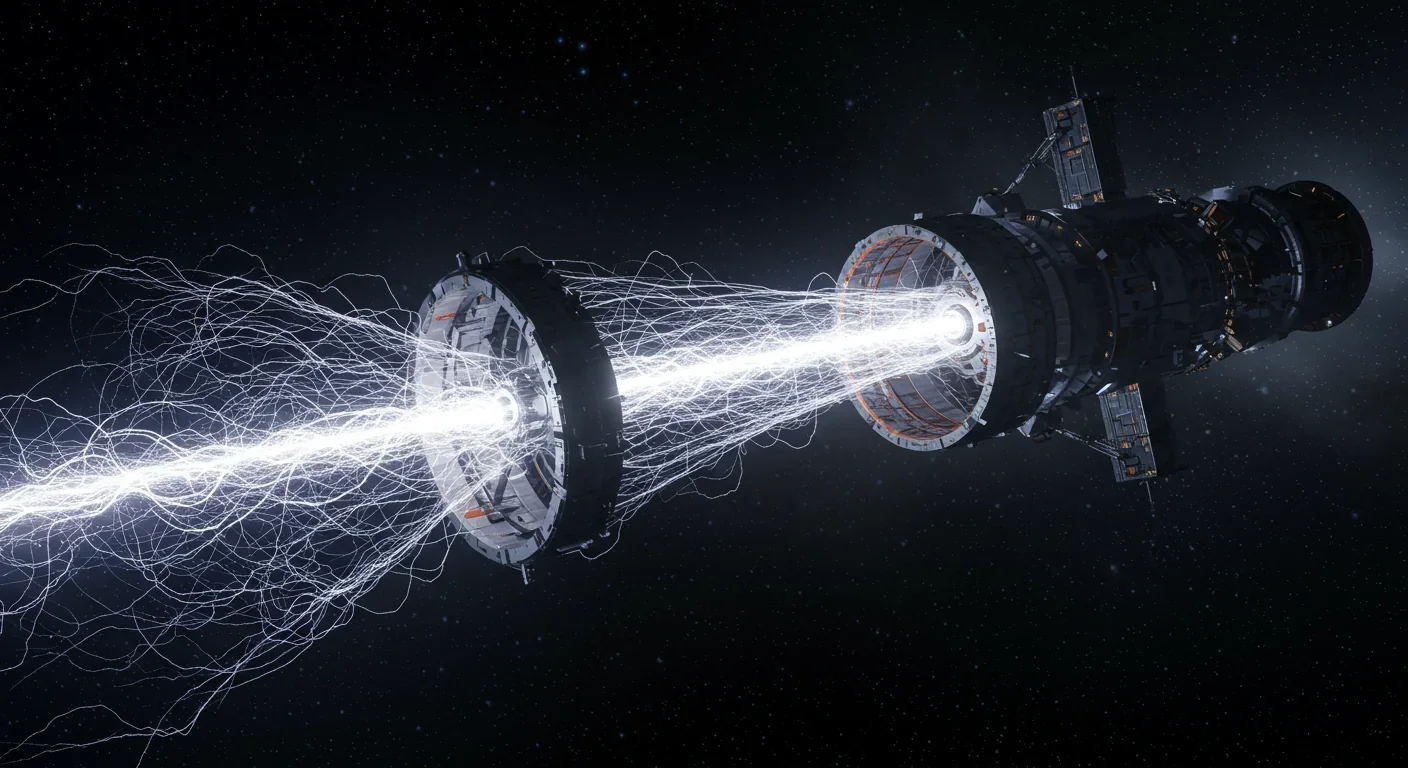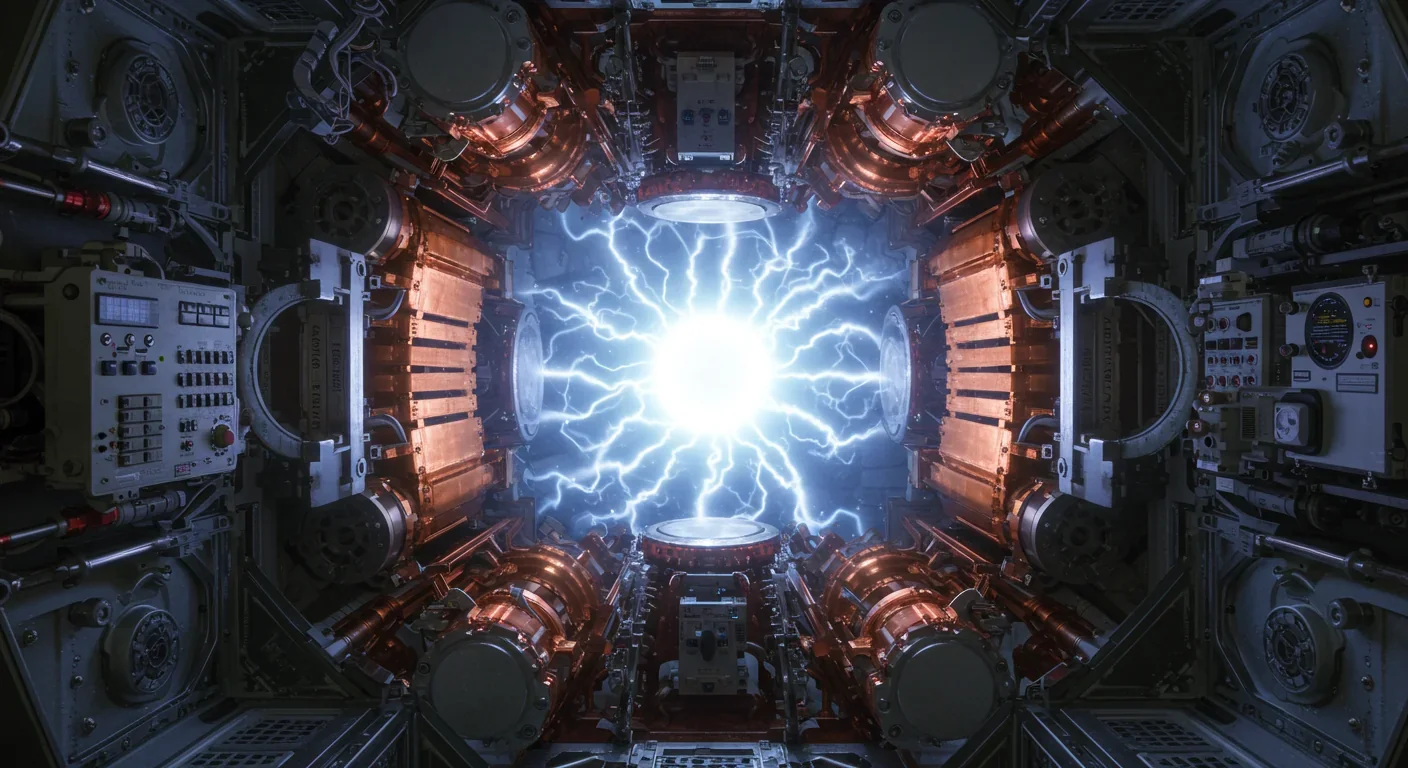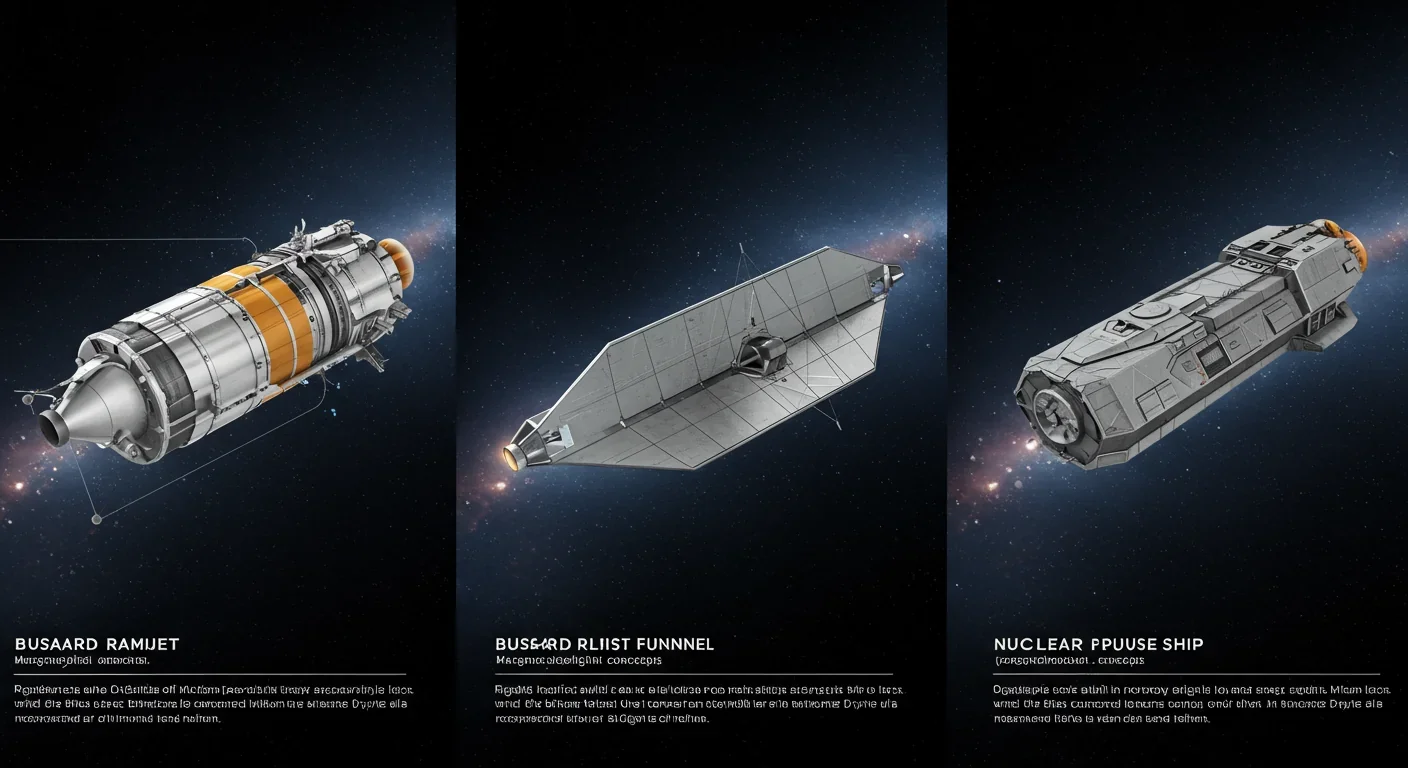Space Radiation Hormesis: Could Low Doses Be Protective?

TL;DR: The Bussard Ramjet, proposed in 1960, would scoop interstellar hydrogen with a massive magnetic field to fuel fusion engines. Recent studies reveal fatal flaws: magnetic drag may exceed thrust, and proton fusion loses a billion times more energy than it generates.

Picture a spacecraft the size of a skyscraper, racing through the void between stars at speeds approaching a tenth of light's velocity. Instead of carrying fuel tanks that would dwarf mountains, it extends an invisible magnetic funnel stretching hundreds of kilometers ahead, scooping hydrogen atoms from the near-vacuum of space and igniting them in a fusion furnace that propels it ever faster. This is the Bussard Ramjet, a propulsion concept so audacious it sounds like pure fiction, yet it's rooted in physics we understand today.
Robert W. Bussard unveiled this idea in 1960, and it immediately captured imaginations across science and science fiction alike. The appeal is obvious: if you could fuel your ship from the universe itself, you'd sidestep the tyranny of carrying every gram of propellant from Earth. But six decades later, we're still asking whether this dream machine could ever work, and recent computational studies suggest the answer might be more complicated than Bussard hoped.
The interstellar medium isn't empty. Between stars, space contains roughly one hydrogen atom per cubic centimeter, an astonishingly low density by Earthly standards but a theoretically limitless reservoir for a spacecraft designed to harvest it. Hydrogen makes up about 91% of the interstellar medium's atoms, the lightest element and the most abundant in the universe.
Bussard's insight was elegant: use an enormous magnetic field to funnel ionized hydrogen into a fusion reactor. The reactor would compress the hydrogen until nuclear fusion occurred, releasing tremendous energy. Some of that energy would propel the spacecraft forward; the rest would power the magnetic scoop itself. In theory, as the ship accelerated, it would sweep up even more hydrogen per second, creating a feedback loop that could push velocities toward a meaningful fraction of light speed.
The concept seemed almost too good to be true. And as physicists began scrutinizing the details, they found exactly that.
At the heart of the Bussard Ramjet lies a colossal magnetic field extending hundreds or even thousands of kilometers in radius. This isn't a physical structure, it's an invisible funnel of electromagnetic force that deflects charged particles. Because much of the interstellar hydrogen exists in an ionized state thanks to high-energy cosmic radiation, those hydrogen ions respond to magnetic fields.
The spacecraft would generate this field using superconducting coils, possibly arranged in a loop 50 to 100 kilometers in radius and weighing on the order of 100 tonnes. As the ship moves through space, the magnetic field interacts with the surrounding plasma, creating an artificial magnetosphere with a bow shock ahead of the craft, much like Earth's magnetosphere deflects the solar wind. Hydrogen ions spiraling into this field would be channeled toward the fusion reactor at the rear.
Recent computational work by Peter Schattschneider and Al Jackson in 2022 revisited these mechanics using updated models. They calculated that a functional magnetic scoop would need a diameter of about 4 kilometers and an overall length of 200 kilometers, an engineering scale that dwarfs anything humanity has built in space.
Collecting hydrogen is one challenge; burning it is another entirely. Fusion reactors on Earth struggle to achieve net energy gain even with deuterium and tritium, isotopes that fuse far more readily than the ordinary hydrogen (protium) that dominates interstellar space. The National Ignition Facility achieved this milestone only in 2022, and that was under controlled laboratory conditions with precisely chosen fuel.
Proton-proton fusion, the reaction that powers stars like our Sun, requires temperatures around 14 million Kelvin and pressures found in stellar cores. Even deuterium fusion, which uses heavier hydrogen isotopes, demands temperatures exceeding one million Kelvin, an order of magnitude lower but still ferociously difficult to maintain in a spacecraft reactor.
Bussard originally proposed using the CNO cycle, a catalytic fusion process where carbon nuclei accelerate hydrogen burning. This reaction occurs in massive stars and operates at somewhat lower thresholds than the proton-proton chain. But it still requires conditions no fusion reactor has sustained outside a star, and it assumes you're carrying a supply of carbon catalyst, which adds mass and complexity.

What makes this worse: a 1978 analysis by T.A. Heppenheimer found that Bremsstrahlung radiation losses from compressing protons to fusion densities exceed the power output by a factor of about one billion. In other words, you'd lose vastly more energy trying to ignite the fusion than you'd ever get back.
Even if you solve fusion ignition, there's a subtler problem that might doom the ramjet entirely: magnetic drag. As your spacecraft plows through the interstellar medium, the magnetic scoop doesn't just collect hydrogen, it also exerts a drag force on every particle it encounters. This drag grows with velocity, and at relativistic speeds it could counteract or even exceed the thrust generated by the fusion reactor.
The energy required to accelerate each scooped hydrogen atom to match the ship's velocity increases with speed. Early optimistic models assumed a magnetic field fall-off exponent of f=1, but later experiments and simulations showed the exponent is closer to f=2, reducing performance predictions by roughly an order of magnitude. This means the effective "sail area" of the magnetic scoop is smaller than Bussard hoped, and the drag penalty is higher.
Schattschneider and Jackson's 2022 study concluded that with realistic interstellar hydrogen densities, net thrust may actually be negative once you account for magnetic drag. The ramjet could become a brake rather than an engine, a cosmic irony that undermines the entire concept.
Faced with these obstacles, researchers have proposed modified designs. The Ram-Augmented Interstellar Rocket, or RAIR, carries onboard deuterium or tritium fuel to supplement the scarce interstellar hydrogen. This reduces reliance on the enormous magnetic scoop and makes fusion ignition more achievable, though it sacrifices the ramjet's signature advantage: infinite range.
Another idea is the laser-powered fusion ramjet, where a powerful laser stationed back in the solar system beams energy to the spacecraft to ignite fusion reactions in the collected hydrogen. This sidesteps the onboard energy balance problem but tethers the ship to a fixed infrastructure and limits range to however far the laser can reach.
A more radical concept is the pre-seeded trajectory, sometimes called a fusion runway. Autonomous probes would travel ahead of the crewed ship, dropping fuel pellets along the route. The ramjet would then scoop these pellets and ignite impact fusion at high speed, avoiding both the hydrogen scarcity issue and the drag penalty of a huge magnetic field. Of course, this requires an enormous upfront investment in pre-mission infrastructure and transforms the ramjet into something closer to a refueling relay than a true interstellar engine.
No laboratory has tested magnetic hydrogen collection at relativistic velocities. No experimental validation exists for the core assumptions underpinning the Bussard Ramjet. The closest analogs are magnetic sail experiments and fusion research programs like ITER, neither of which operates under the extreme conditions a ramjet would face.
Computational models have grown more sophisticated since 1960, incorporating plasma physics, magnetic field dynamics, and fusion kinetics in ways Bussard couldn't. The consensus among researchers who've run these simulations: the original Bussard design probably doesn't work. Magnetic drag is too high, fusion ignition is too hard, and the energy budget doesn't close.
That doesn't mean all ramjet concepts are dead. Modified versions that carry some fuel, use external power sources, or operate in denser regions of the interstellar medium might be viable. But the pure Bussard Ramjet, the self-sustaining fusion engine fed entirely by ambient hydrogen, looks increasingly like a beautiful idea that physics won't allow.
Laser sails could theoretically reach 20% of light speed by riding a beam of concentrated laser light from Earth orbit. Projects like Breakthrough Starshot are actively developing this technology, aiming to send tiny probes to Alpha Centauri within a human lifetime. The catch: you can't slow down at the destination, and the probe must be minuscule to achieve those speeds.
Nuclear pulse propulsion, the concept behind Project Daedalus, would detonate fusion bombs behind the spacecraft and ride the shockwave. Daedalus envisioned a 50-year journey to the nearest stars using a 50-tonne engine. It's brute-force engineering, but it's grounded in physics we've demonstrated (albeit in weapons, not propulsion). The challenge is carrying thousands of fusion pellets and surviving the repeated nuclear detonations.
Antimatter rockets offer the highest energy density of any known fuel, but producing and storing antimatter remains prohibitively expensive and dangerous. Current production rates would take millennia to accumulate enough antimatter for a single interstellar mission.
Each of these alternatives avoids the ramjet's core problems but introduces new ones. There's no magic bullet for interstellar travel, a reality that's becoming clearer as our models improve.

Despite its technical challenges, the Bussard Ramjet has left a lasting mark on science fiction and popular imagination. It features prominently in works like Tau Zero, Arthur C. Clarke's The Songs of Distant Earth, and even Star Trek. These stories explore what interstellar civilization might look like if we could build ships that never run out of fuel, vessels that roam the galaxy for centuries powered by the medium itself.
That cultural resonance matters because it shapes how we think about exploration and what futures we consider possible. The ramjet has inspired research into magnetic sails, plasma physics, and advanced propulsion concepts that might one day prove viable even if the original design doesn't.
If the Bussard Ramjet is probably unworkable, why do researchers keep revisiting it? Because the constraints that break the design also teach us about the limits of physics and engineering. Understanding why something fails is often as valuable as discovering what succeeds.
The ramjet forces us to grapple with questions at the intersection of astrophysics, plasma dynamics, materials science, and energy systems. Can we generate and sustain magnetic fields on kilometer scales? Can we achieve net-positive fusion with ordinary hydrogen? Can we manage the thermal and radiation loads of a fusion engine operating continuously for decades?
These aren't just propulsion questions, they touch on fundamental capabilities that would transform human civilization whether or not we ever reach another star. Fusion power on Earth, advanced magnetic confinement, materials that withstand extreme conditions—all of these spin out from ramjet research.
No prototype Bussard Ramjet will launch anytime soon. The technical barriers are too high, and the return on investment too uncertain compared to nearer-term goals like Mars colonization or asteroid mining. But the concept serves a different purpose now: it's a benchmark, a limit case that helps us map the boundaries of the possible.
Future propulsion breakthroughs might come from hybrid designs that borrow elements of the ramjet while avoiding its fatal flaws. Imagine a spacecraft that uses a modest magnetic scoop to collect hydrogen for attitude control and life support, while relying on a fusion reactor fueled primarily by onboard deuterium. Or a vessel that deploys a magnetic sail for braking in the destination star system, using the stellar wind as a propellant-free brake.
The interstellar medium's hydrogen will remain out there, a tantalizing reserve that future engineers might yet learn to tap. Whether we do it Bussard's way or invent something entirely new, the dream of fueling starships from the cosmos itself isn't going away.
For students and researchers entering the field today, the Bussard Ramjet offers a case study in how ambitious ideas evolve. Bussard's 1960 proposal was visionary, but it was also a first draft, grounded in the physics knowledge of the era. Sixty years of refinement have revealed its flaws, yet the underlying question remains urgent: how do we cross interstellar distances?
The skills needed to answer that question, plasma physics, fusion engineering, computational modeling, materials science, are exactly the skills humanity will need to solve challenges on Earth. Whether or not we ever build a ramjet, the pursuit sharpens our tools and deepens our understanding.
And there's something else: a reminder that the universe doesn't care about our limitations. The distances are real, the energy requirements are real, and the physics is unforgiving. If we want to become an interstellar species, we'll have to earn it through ingenuity, persistence, and a willingness to confront problems that might take centuries to solve.
The Bussard Ramjet may never fly, but the questions it raises, and the research it provokes, might just carry us to the stars.

The Bussard Ramjet, proposed in 1960, would scoop interstellar hydrogen with a massive magnetic field to fuel fusion engines. Recent studies reveal fatal flaws: magnetic drag may exceed thrust, and proton fusion loses a billion times more energy than it generates.

Mitophagy—your cells' cleanup mechanism for damaged mitochondria—holds the key to preventing Parkinson's, Alzheimer's, heart disease, and diabetes. Scientists have discovered you can boost this process through exercise, fasting, and specific compounds like spermidine and urolithin A.

Shifting baseline syndrome explains why each generation accepts environmental degradation as normal—what grandparents mourned, you take for granted. From Atlantic cod populations that crashed by 95% to Arctic ice shrinking by half since 1979, humans normalize loss because we anchor expectations to our childhood experiences. This amnesia weakens conservation policy and sets inadequate recovery targets. But tools exist to reset baselines: historical data, long-term monitoring, indigenous knowle...

Social media has created an 'authenticity paradox' where 5.07 billion users perform carefully curated spontaneity. Algorithms reward strategic vulnerability while psychological pressure to appear authentic causes creator burnout and mental health impacts across all users.

Scientists have decoded how geckos defy gravity using billions of nanoscale hairs that harness van der Waals forces—the same weak molecular attraction that now powers climbing robots on the ISS, medical adhesives for premature infants, and ice-gripping shoe soles. Twenty-five years after proving the mechanism, gecko-inspired technologies are quietly revolutionizing industries from space exploration to cancer therapy, though challenges in durability and scalability remain. The gecko's hierarch...

Cities worldwide are transforming governance through digital platforms, from Seoul's participatory budgeting to Barcelona's open-source legislation tools. While these innovations boost transparency and engagement, they also create new challenges around digital divides, misinformation, and privacy.

Every major AI model was trained on copyrighted text scraped without permission, triggering billion-dollar lawsuits and forcing a reckoning between innovation and creator rights. The future depends on finding balance between transformative AI development and fair compensation for the people whose work fuels it.